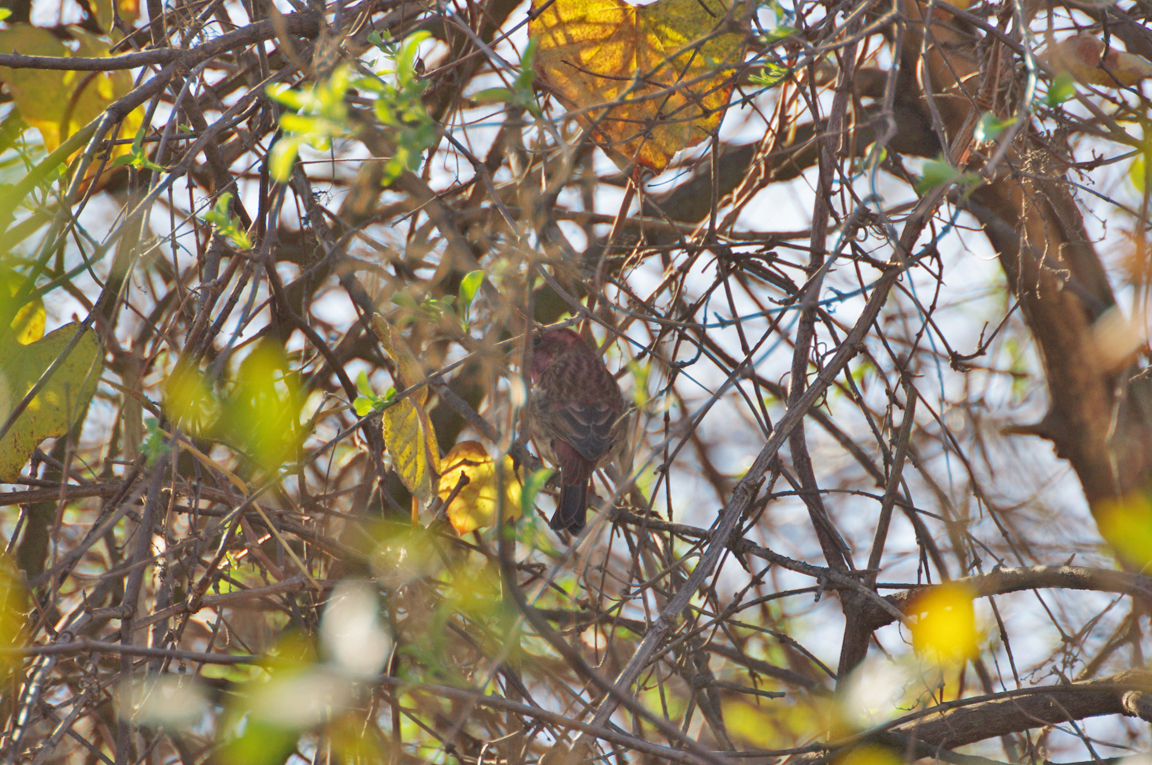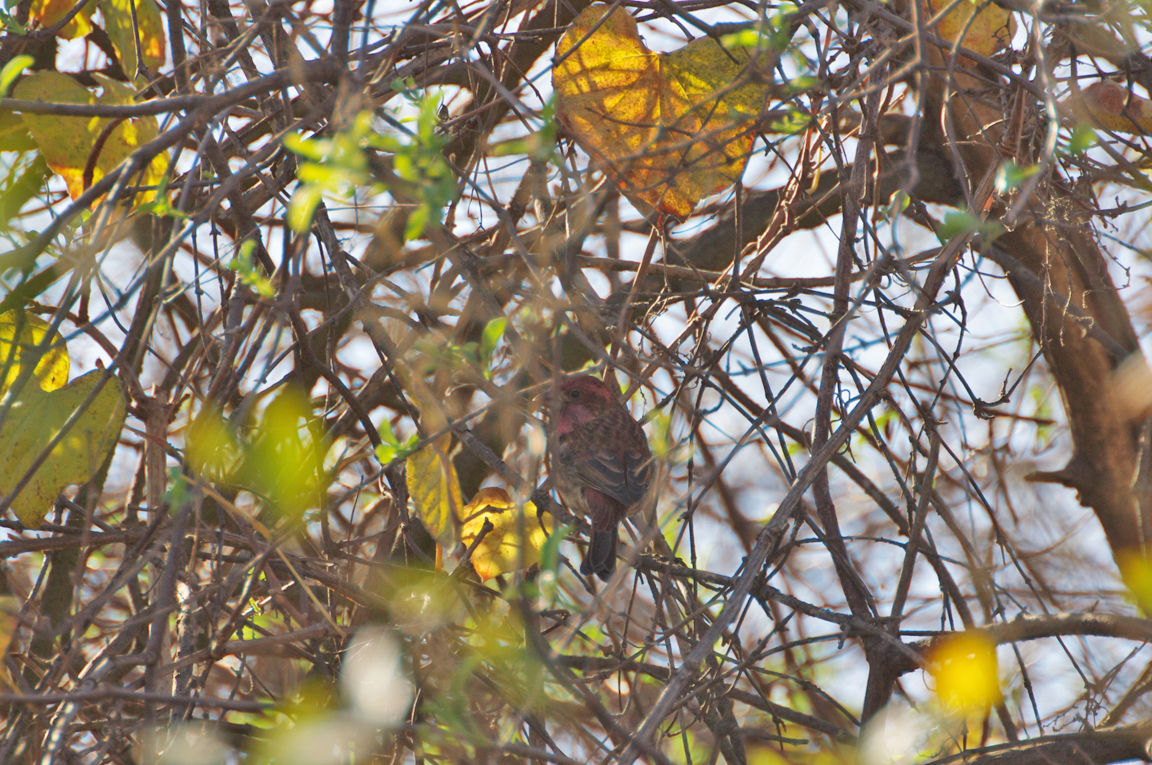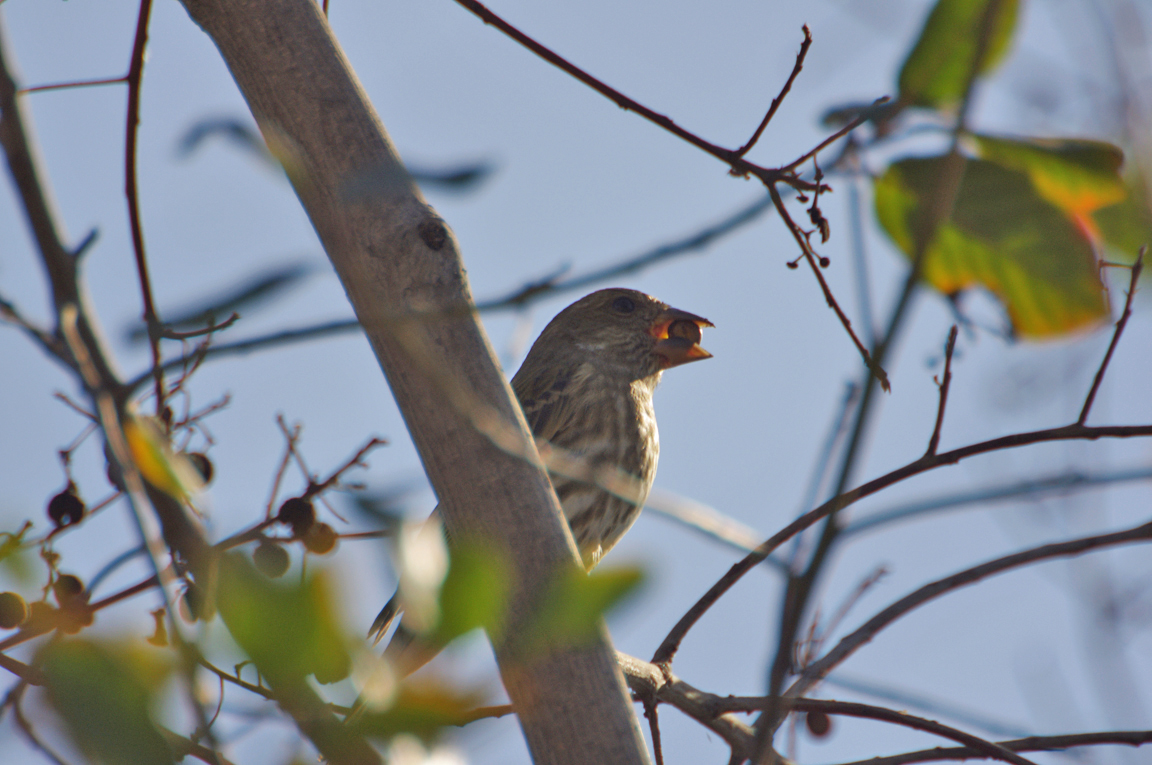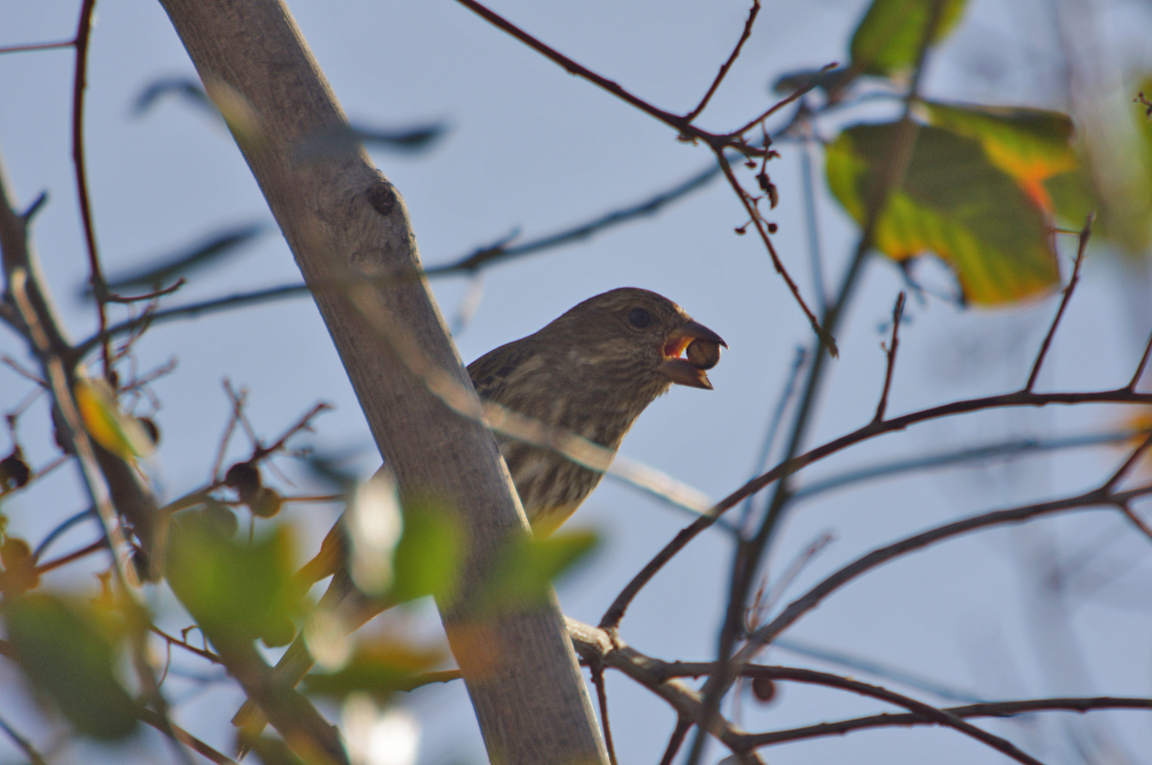|
|
|
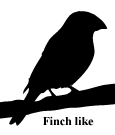 |
Purple Finch
|
| Carpodacus purpureus | |
The Purple Finch is the bird that Roger Tory Peterson famously described as a "sparrow dipped in raspberry juice." For many of us, they're irregular winter visitors to our feeders, although these chunky, big-beaked finches do breed in northern North America and the West Coast. Separating them from House Finches requires a careful look, but the reward is a delicately colored, cleaner version of that red finch. Look for them in forests, too, where you're likely to hear their warbling song from the highest parts of the trees.
Interesting Information
-
The Purple Finch uses its big beak and tongue to crush seeds and extract the nut. They do a similar trick to get at nectar without eating an entire flower, and also to get to a seed buried inside a fleshy fruit.
-
Purple Finches seem to be losing numbers in eastern North America as House Finches have moved in after being brought to New York City in the 1950s. One study of finch behavior found that Purple Finches lost out to House Finches more than 95% of the times the two birds encountered each other.
-
Into their rich warbling songs, Purple Finches sometimes add in the sounds of other species, including Barn Swallows, American Goldfinches, Eastern Towhees, and Brown-headed Cowbirds.
-
Birds that eat fruits are doing plants a favor by distributing their seeds later on. But finches eat the seeds themselves. Though they may not look the part, finches are predators. From a seed's point of view, these birds' hefty beaks mark the end of the line.
-
The oldest recorded Purple Finch lived to be 11 years 9 months old.
Description
Adult Description
Size & Shape
Among the small forest birds like chickadees, kinglets, and nuthatches, Purple Finches are large and chunky. Their powerful, conical beaks are larger than any sparrow's. The tail seems short and is clearly notched at the tip.
-
Length Range: 14-16 cm (5.5-6.25 in)
-
Weight: 34 g (1.2 oz)
-
Size: Small (5 - 9 in)
Color Pattern
Male Purple Finches are delicate pink-red on the head and breast, mixing with brown on the back and cloudy white on the belly. Female Purple Finches have no red. They are coarsely streaked below, with strong facial markings including a whitish eyestripe and a dark line down the side of the throat.
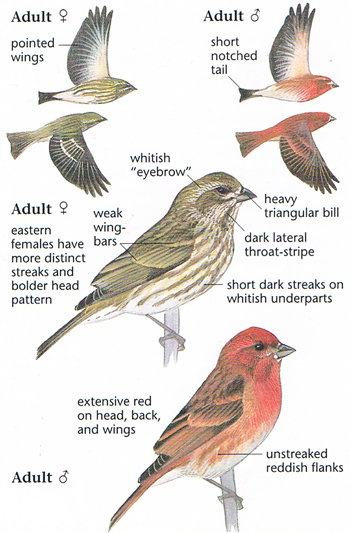
Photo taken from: The Sibley Field Guide by David Allen Sibley
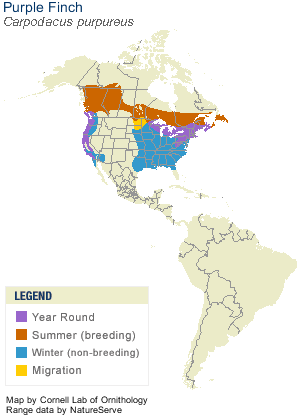
© 2003 Cornell Lab of Ornithology
|
Habitat |
|
Purple Finches breed mainly in coniferous forests or mixed deciduous and coniferous woods. During winter you can find them in a wider variety of habitats, including shrublands, old fields, forest edges, and backyards. |
|
Behavior |
|
Purple Finches readily come to feeders for black oil sunflower seeds. You'll also see them in forests, where they can be noisy but hard to see as they forage high in trees. In winter they may descend to eat seeds from plants and stalks in weedy fields. Their flight is undulating. |
|
Food |
|
Purple Finches eat mainly seeds of coniferous trees and elms, tulip poplars, maples, and others. They also eat soft buds, nectar (extracted by biting the bases off flowers), and many berries and fruit, including blackberries, honeysuckle, poison ivy, crabapples, juniper berries, cherries, and apricots. In winter you may see Purple Finches eating seeds of low plants like dandelions, ragweed, and cocklebur. They eat some insects, including aphids, caterpillars, grasshoppers, and beetles. |
Taxonomy
| Kingdom: | Animalia |
| Phylum: | Chordata |
| Subphylum: | Vertebrata |
| Class: | Aves |
| Order: | Passeriformes |
| Family: | Fringillidae |
| Subfamily: | Carduelinae |
| Genus: | Carpodacus |
| Species: | Carpodacus purpureus |
| Subspecies: | Carpodacus purpureus californicus |
| Carpodacus purpureus purpureus |
Similar Species |
|
|
Bird Sound |
|
Typical call note is a short, low tek. |
|
Eggs look like this |
|
Photo taken from: ARCTOS Collaborative Collection Management Solution |
